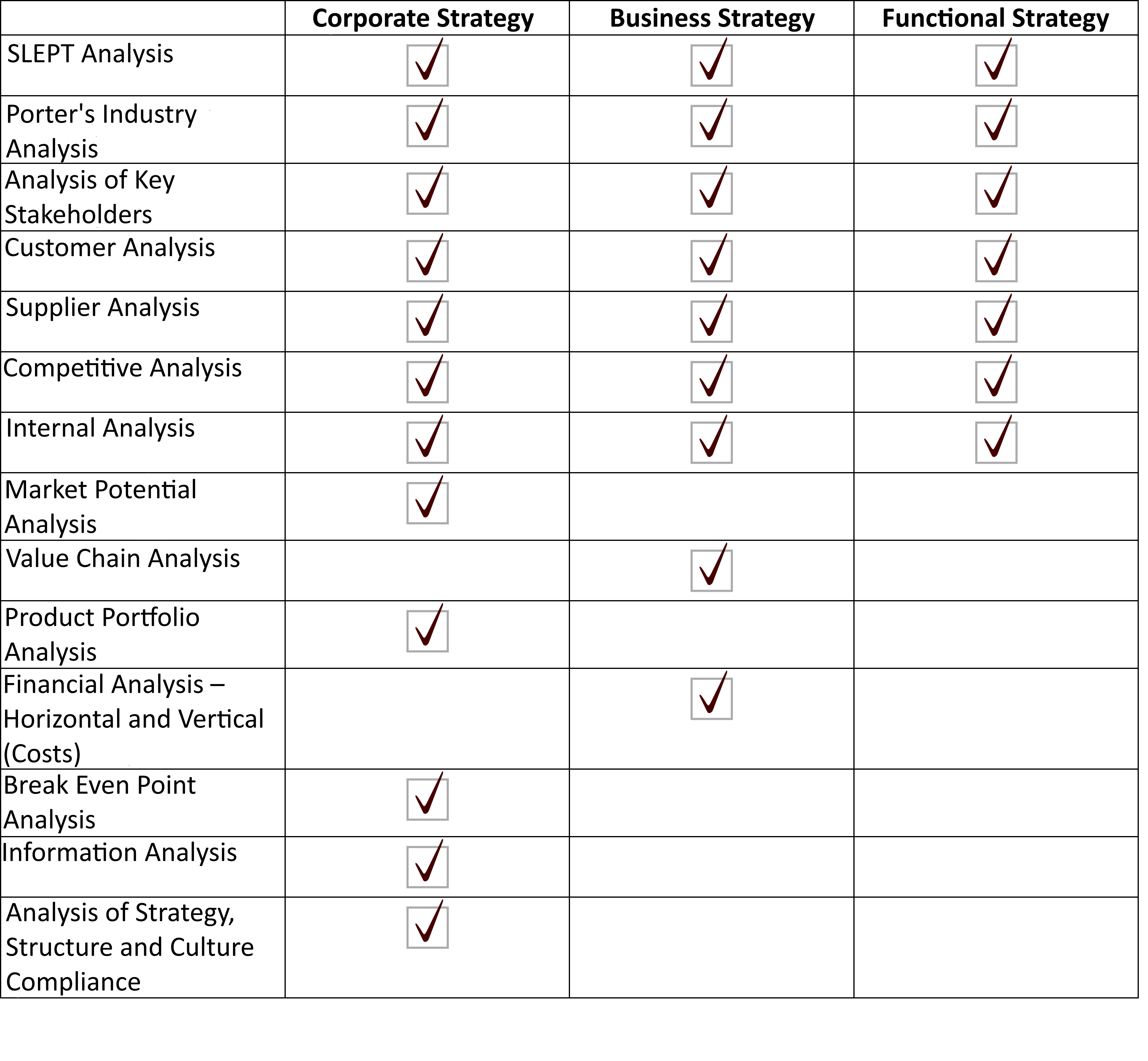5.9. Other, General Suggestions on How to Efficiently Implement Your Strategy
In the previous text, we explained the basis types of analysis which can aid in assessing the company’s situation and options prior to deciding on a strategy.
In terms of the actual implementation of strategic analysis, we have several practical suggestions (loosely adapted and modified from Hanzelková, Keřkovský, Odehnalová, Vykypěl, 2009):
-
Most analyses that you decide on conducting involve analyzing not only current and past developments, but also attempting to estimate future developments. This estimation is best conducted for the same period as defined in the given strategy (see Strategic Time Horizon).
-
Depending on what type of strategy you wish to set, make sure to work with analyses as well.
-
For example, with the SLEPT analysis, Porter analysis, Stakeholder analysis, Analysis for Suppliers, Distributors, Customers and Internal Analysis, it holds true that all of the above can provide support for the decision-making process for corporate, business and functional strategies. It is also fairly useful to ask the following questions for each type of analysis:
-
While deciding on a corporate strategy, where you decide on which SBU (line of business) to engage in and which not to, it is advisable to process data which will offer support in deciding on whether to newly implement/further develop the given SBU or line of business or not, and possibly what will the strategic limits be – especially in terms of the competitive strategy, markets etc. Asking the question “IF” comes up when deciding e.g. on whether or not to go in a new business direction.
-
On the other hand, when conducting strategic analysis, which should offer support when deciding on a business strategy – i.e. how a given strategy will be set for a particular SBU (line of business), the type of question asked is usually in the form of HOW details of a given business strategy should be set, in terms of the 7Ps.
Note: It is not realistic for SMEs to implement a strategic analysis twice – first to define the corporate strategy, i.e. to decide on implementing a given SBU or not, and second, for the business strategy, i.e. for a more detailed processing of the strategy in terms of the 7Ps of a given SBU. When implementing strategic analysis for new business plans, it is advisable to consider the fact that the strategic analysis and related information should support the two main decision-making processes – IF the given plan should be implemented or not, and if so, then HOW (7P).
-
Functional strategies are then only affected by factors of the given functional aspect – i.e. for a strategic analysis conducted in order to decide on a marketing strategy, only the issues related to marketing are analyzed.
- Other types of analysis are suitable for facilitating the decision-making process for only a limited number of strategies – e.g. the product portfolio analysis is particularly suitable for facilitating the decision-making process regarding the corporate strategy, i.e. what types of SBUs (products) will the company offer (see Table).

Typical Examples of Working with Individual Analyses (Hanzelková, 2015)
-
At the end, the strategic analysis generates a set of conclusions, which, using the SWOT analysis, should be classified according to S (strengths) and W (weaknesses) (stemming from the analysis of internal factors) and external O (opportunities) and T (threats) (stemming from the analysis of external factors). This SWOT classification should serve as the basis for formulating your strategy, which should systematically take advantage of S and O, and solve or eliminate W and T, or at the very least strategically treat them within the company’s means.
-
Identified S, W, O, T should also be realistically reduced prior to formulating the strategy – selecting only those that are the most essential for the strategy, and work only with them.
- Finally, it is usually suitable to conduct a one-off strategic analysis when engaging in new business projects or setting the first company strategy. It is also best to regularly conduct systematic assessments of certain key types of strategic data (e.g. major trends, customers, competitors), and if need be, to revise the strategy (see Implementation and Control of Strategy Fulfillment).


